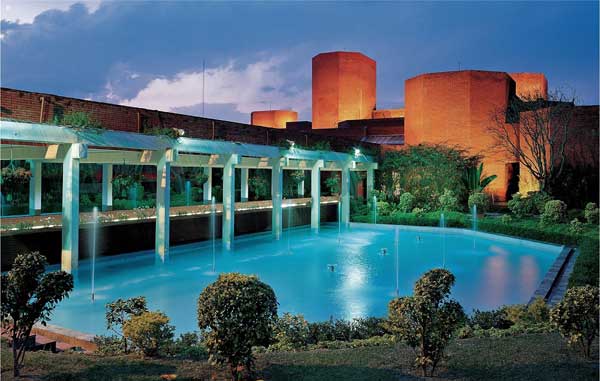
Ar. Ravindra Bhan – A legacy left behind
Ravindra Bhan, the architect who changed the face of landscape architecture in India, will be forever remembered for the landscape revolution he embarked and opened doors to. His works seek connection to the nature, coming with a rich blend of the design and substance. His projects are an attempt to make landscape stand out as an actual core design feature rather than being a mere design element. Spanning across distinct project typologies such as heritage site development, till the recreational lakefront development, his designs are independent creations, each reflecting a core concept of its own.
Landscape architecture is the design of a ‘harmonious whole’ understanding that the natural components like earth and water are interdependent.
Being a proud alumnus of Washington University and University of Pennsylvania, his mind was an immense repository of architectural knowledge that mastered the art of landscaping, “without abuse to nature” as he calls it. He envisioned a highly workable state of landscape architecture for the Indian population that had him become the awardee of the prestigious Aga Khan award, International Low Cost Housing Competition, Merit for American society of Landscape Architects and many more that added to his design supremacy,
His sad demise has left a legacy of inspirational design for tomorrow’s population.

BRINGING THE CULTURAL STRING
“Traditional methods studied the behavior of one material with another”
The architect believes that traditions come with solutions. His view towards traditional architecture was inclined towards the contextual understanding they encompassed, rather than as a mere aesthetic inspiration.
Ayodhya, believed to be the birthplace of the Hindu god Ram, is a place that lost its portions to the water of River Sarayu when the river changed its course. The restored silted portions gave rise to picturesque views that were beautified by Ar. Ravindra Bhan’s project, involving a bathing area along the newly created channel that attempted to replicate the river’s outlook. Along with a tribute to the old glory, the design also involved redirecting the drains, solving the water issues emerging in the locale.
Above: Ayodhya Ghats, Faizabad
DESIGN WITH A REASON
“Hillocks massacred in the name of urbanisation”
Ravindra Bhan being the participant in the first ever master planning attempt of Delhi, has a micro-accuracy understanding of the Indian landscape and their transformation from the old to new. He observed that the cities of today neglected the considerations of the “existing land features” such as hillocks or the trees and were blind followers of emerging volumes of built solids. His vision was on the voids instead, which were highly capable to balancing the quality of the solids (buildings).
“The sitting of a structure must be ecologically balanced”, he says.
Going against the existent town planning processes that, according to him, resembled games with zig-zag road patterns and coloured erections, he focused on site development and land survey to create the liveable base for the emerging structures. He also mentions that the multiple re-laying of tar roads that turn a deaf ear towards the groundwater recharge (livability of base) are the primary reason for urban flooding, a current issue.
The storm water drainage scheme in Churu, Rajasthan, brought by HUDCO, had his proposal that involved pumping out the excess water to the sand dunes of the desert land. The design involved the creation of a lake that relocates the water stagnation points, alleviating the unhygienic conditions existent.
Above: Storm water drainage scheme, Churu, Rajasthan
THE RE-CREATION OF “RECREATION”
“A people-first approach”
The architect brought user experiences that could solve problems. Hotel Mughal Sheraton, being one of the earliest projects in India that included landscape design at the design stage had a distinct style in both spatial design and landscapes, letting him win the prestigious Aga Khan Award. Considering the site nature and user psychology, the site was refrained from being cut into two halves and brought a balance for the user right from the entry. His design typically had a great concern on maximising the experience and minimising the worldly disturbance such as noise, poor air quality etc. that the cities primarily suffer. His other project Hotel Kanishka has also been known for the selective noise buffer created by tree densification and water features that reflect aesthetic significance on the inside, while solving the noise issues from the outside.
Above: Mughal Sheraton Hotel, Agra
VALUING THE DESIGN VALUES
“From respecting the people to respecting the nature”
Ravindra Bhan has been seen as a multifaceted architect who has been a professor, an advisor and a true co-ordinator of design strengths such as craftsmanship, surveying, spatial design and more. Standing as an ultimate symbol of his vision is the renowned Shakthi Stala, the memorial of late Prime Minister Indira Gandhi. Named after “The abode of energy”, the project was designed as a geological park, the first of its kind, ehich represented the diversity of the Indian land along with being a reminiscent of the childhood memories of Smt. Indira Gandhi that pictured the rocks and meadows. The Sentinel rock, a hand-shaped un-blasted solid from Bhillai, Orissa, gave the ultimate backdrop to the memorial. Diverse flora from different parts of the country were chosen and selectively introduced to damp, flood-prone contours of the site, with efficient landscape design from Ravindra Bhan.
Above: Shakthi Stala, Delhi
Architect Ravindra Bhan will be perpetually remembered for pioneering landscape architecture in India, opening a new perspective to ‘what is beneath’ for every future architect emerging.











